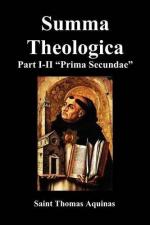The figurative reason of these things was that those who are to be consecrated to the spiritual ministry of Christ, should be first of all purified by the waters of Baptism, and by the waters of tears, in their faith in Christ’s Passion, which is a sacrifice both of expiation and of purification. They have also to shave all the hair of their body, i.e. all evil thoughts. They should, moreover, be decked with virtues, and be consecrated with the oil of the Holy Ghost, and with the sprinkling of Christ’s blood. And thus they should be intent on the fulfilment of their spiritual ministry.
Reply Obj. 10: As already stated (A. 4), the purpose of the Law was to induce men to have reverence for the divine worship: and this in two ways; first, by excluding from the worship of God whatever might be an object of contempt; secondly, by introducing into the divine worship all that seemed to savor of reverence. And, indeed, if this was observed in regard to the tabernacle and its vessels, and in the animals to be sacrificed, much more was it to be observed in the very ministers. Wherefore, in order to obviate contempt for the ministers, it was prescribed that they should have no bodily stain or defect: since men so deformed are wont to be despised by others. For the same reason it was also commanded that the choice of those who were to be destined to the service of God was not to be made in a broadcast manner from any family, but according to their descent from one particular stock, thus giving them distinction and nobility.
In order that they might be revered, special ornate vestments were appointed for their use, and a special form of consecration. This indeed is the general reason of ornate garments. But the high-priest in particular had eight vestments. First, he had a linen tunic. Secondly, he had a purple tunic; round the bottom of which were placed “little bells” and “pomegranates of violet, and purple, and scarlet twice dyed.” Thirdly, he had the ephod, which covered his shoulders and his breast down to the girdle; and it was made of gold, and violet and purple, and scarlet twice dyed and twisted linen: and on his shoulders he bore two onyx stones, on which were graven the names of the children of Israel. Fourthly, he had the rational, made of the same material; it was square in shape, and was worn on the breast, and was fastened to the ephod. On this rational there were twelve precious stones set in four rows, on which also were graven the names of the children of Israel, in token that the priest bore the burden of the whole people, since he bore their names on his shoulders; and that it was his duty ever to think of their welfare, since he wore them on his breast, bearing them in his heart, so to speak. And the Lord commanded the “Doctrine and Truth” to be put in the rational: for certain matters regarding moral and dogmatic truth were written on it. The Jews indeed pretend that on the rational was placed a stone which changed color




